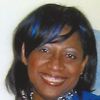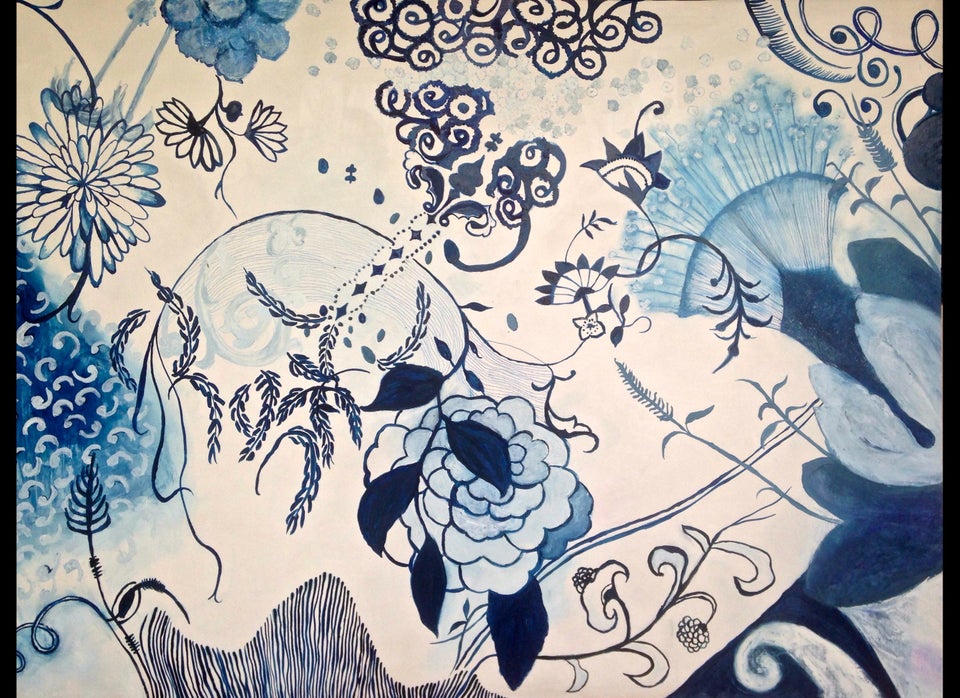Not many people start their art career being mentored by world-renowned artist Tania Bruguera, but La Vaughn Belle has been one of the few lucky individuals to do so. "To understand how I ended up working with Tania," La Vaughn told me in a recent interview, "you have to first understand how I ended up studying in Cuba in the first place." As a junior at Columbia University in New York, Belle realized that she wanted to be an artist, but she was too far into her undergraduate college career to switch majors. She decided, a few years after finishing her undergraduate degree, that if she really wanted to make it as an artist she would have to return home to the Caribbean, where she would have family support to pursue a visual arts career.
Back home in the Virgin Islands she started researching art institutions in the Caribbean and found out about an amazing art program in Cuba, where she would eventually enroll for her MFA degree. "The campus of the school was an old country club," she informed," and, like so many things in Cuba, it is beautiful but run down. What is particularly important about this school, though, is that it caters to all the art forms: music, dancing, visual arts. You would enter the gates of the campus and be greeted by the sound of drums. All of that infused the work I began doing."
At the same time that she was getting her MFA degree in Cuba, Tania Bruguera was starting an experimental program on the island, which Belle loosely described as a "behavior art" program. And by that she means "art that somehow connects to everyday life."
"The program," she went on to explain, "was almost a sociological study because it showed how art can become a space of conversation and transformation." The idea of connecting art to everyday life has subsequently become an intrinsic part of Belle's own artistic practice and for this she credits Bruguera and the time she spent in Cuba.
Which is not to say that her time in Cuba was not without its challenges.
"In Cuba," she told me, "everything is set up for Cubans. Consequently, I was always the outsider in Cuba. It took me a very long time to understand what people were saying because on the island people speak in so many layers of metaphors. Especially if they do not know you and you are a foreigner like myself. You literally have to pick your way through what is being said to understand what people are saying. At first this was quite frustrating before I came to realize that I was lucky to be an outsider on campus and in Tania Bruguera's program because one of the benefits of being a foreigner, an outsider, in Cuba, is that you come to appreciate the many layers of meanings that are encoded in the simplest things that people say. One of the great benefits of having lived and studied in Cuba is that now, in my work, I also strive to speak in layers."
But what exactly does she mean by speaking in layers?
"The best art speaks in layers," she answered, laughing. "And by that, I mean there are and should be more than one meaning to the work that you create as an artist. That is what I strive for in my own work. I find straight didactic work in fact quite boring. And I find speaking in layers a good way to tackle the many layers that come with my artistic goal of inverting colonial hierarchies on the islands in the Caribbean that are my source."
The islands in the Caribbean that are her source.
Though Belle was born on the island of Tobago she really considers the Virgin Islands, where she went to live as a very young child, her home. Her father is from Barbados and her mother is from Tobago, and those places for her are her "source," she explains, making a clear distinction between one's source/origin and one's home. The Virgin Islands is her home. But it is a problematic home.
For Belle, Europeans created a hierarchical and triangular caste system in the Caribbean which placed them on top and anything of African descent at the bottom of a social pyramid. She uses her work to both invert and subvert this continuing hierarchy. In her work she engages the politics of plantation life, European castles and fairy tales, slave rebellions and confronts the idea of the Virgin Islands as a fantastic creation untouched and pristine in the minds of Europeans.
Belle uses a lot of colonial artifacts to create a narrative that questions power. In the video performance "Somebody's Been Sitting In My Chair," she took on the persona of Goldilocks as a girl walking into a space not her own. In this work particularly she was critiquing the taboo surrounding not being able to touch anything in a Great House. For her, the Great House still retains its power in the Caribbean, as is evidenced by the reluctance of native peoples to touch anything in it -- even today.
And within the Great House, the planter's chair is especially symbolic and powerful. As she explains, "The legs on the planter's chair are extra long so that the planter can sit down, put his feet up and have his boots removed by a servant. In this piece I invited people to occupy the chair in any way that they wanted, and I did a series of Polaroid photographs of individuals in the chair.
"The result was fascinating. What I learnt was that the chair was especially gendered because women in particular were uncomfortable sitting in the chair. To be frank, the chair made women uncomfortable because they were put in a vulnerable position of exposing themselves by sitting in the chair. The discussions that came out of that piece were remarkable!"
In fact, generating discussion with her participants is a running theme in all of the artist's works. On a recent trip to Denmark, for instance, she could not find any evidence of the people the Danish had colonized in contemporary Danish society, yet the Danish presence is an enduring one in the Virgin Islands. To tackle this absence and erasure Belle decided to engage, in a series of paper cut-outs, what she calls "the fantastic fairy tale" that the Virgin Islands represents to the Danes. In this she was referencing the famous writer of children's books, Hans Christian Andersen, who also did cut-outs. She decided to make a book of cut-outs to engage not only the cultural amnesia that exists around the Virgin Islands, but also to reference the ways in which the people of the Virgin Islands were seen as infants, and were subsequently infantilized by the Danes. The fact that the work -- the children's book, that is -- is all-white and has no real pictures, speaks volumes.
Similar ideas of collusion, absence, erasure and recovery are to be found in her "Chaney" pieces -- broken ceramics from Denmark and China that resurface after it rains in the Virgin Islands. For the artist these ceramic pieces are the erased, silenced and absent history of the island literally and tangibly rising to the surface.
And then there is the story of the "four queens." "In the Danish West Indies people are quick to tell you," the artist told me, "that we got our manumission thirty years earlier than most other people did in the region. But manumission, people came to find out, was not freedom, because there were so many strings attached to this "freedom." Fed up with this quasi-freedom that they had thirty years after manumission, a group of people, led mainly by women, decided to burn the place down to get their actual freedom.
"Ironically enough the Danish government chose to mint a special coin to celebrate the freeing of the slaves, and on that coin they used Greek women as a symbol of freedom for the people of the Virgin Islands. Before you knew it, a myth started circulating on the island that if you looked really close you could see the rebellious women of the island in those coins. When I was asked to have an exhibition in a Great House I juxtaposed that reclaimed story of the four rebellious queens adorned on mahogany wood against fine Danish silverware. I liked very much how the island-myth usurped and replaced a disempowering image and story."
Paintings, drawings, ceramics, photography, works on wood, video -- and the list goes on -- are the mediums on and in which Belle creates. "I don't see myself as particularly wedded to any one medium," she told me when I asked her about this. "If I must label myself at all I would just say that I am a contemporary artist. What is most important to me is being true to myself and to the stories that I tell. For me, art is a means of questioning myself, those around me and, ultimately, my society. There is no one medium that can do all of that for me."
Until next time.

